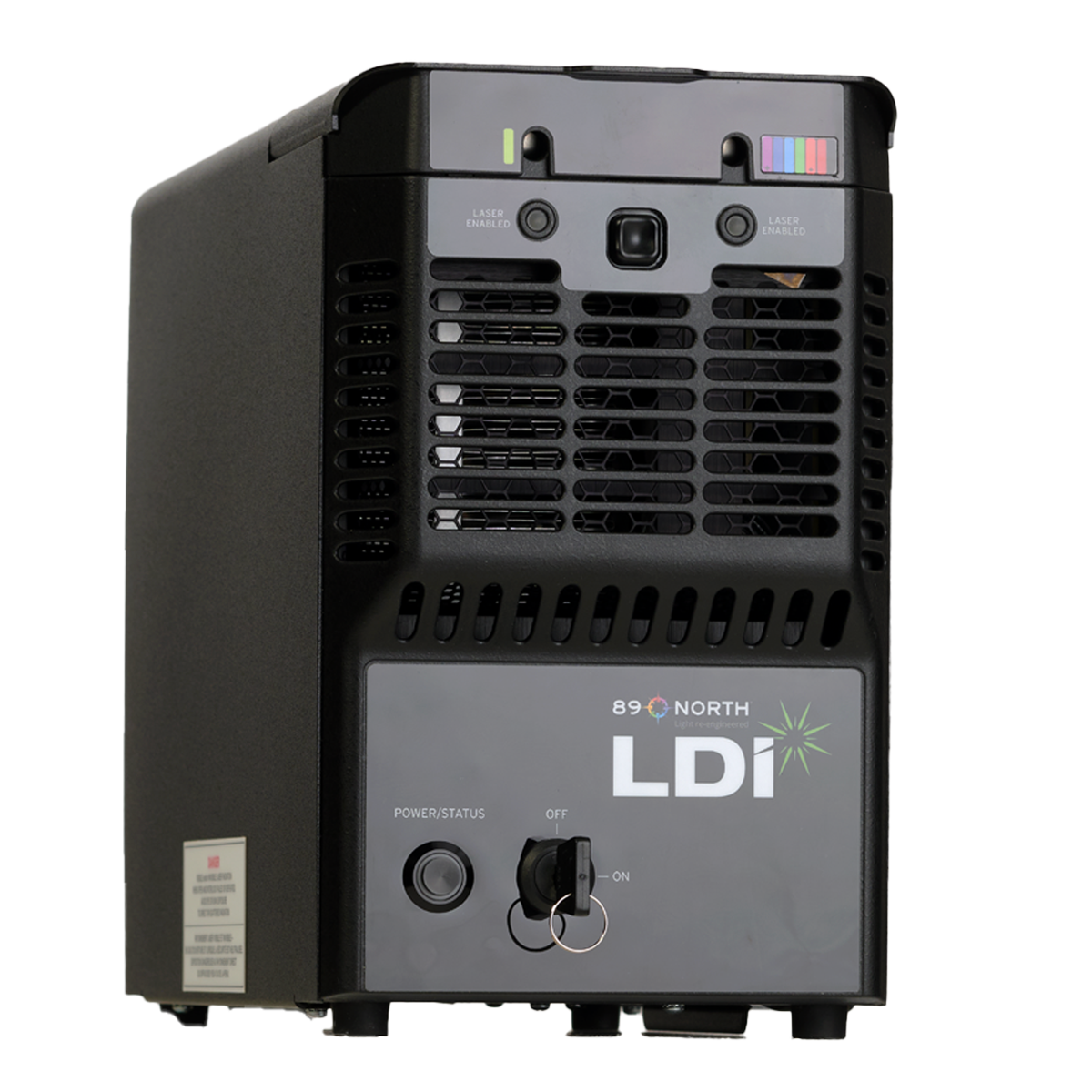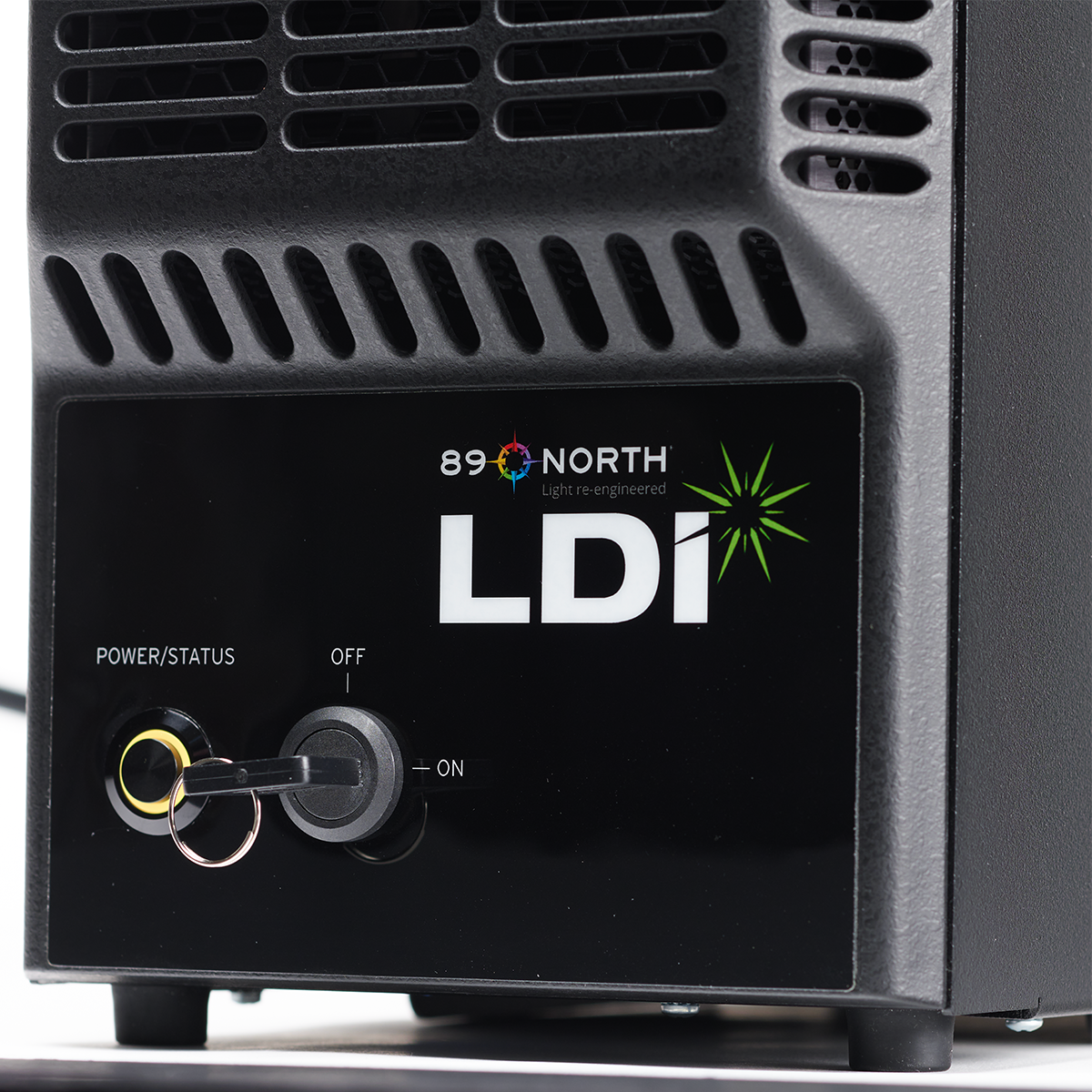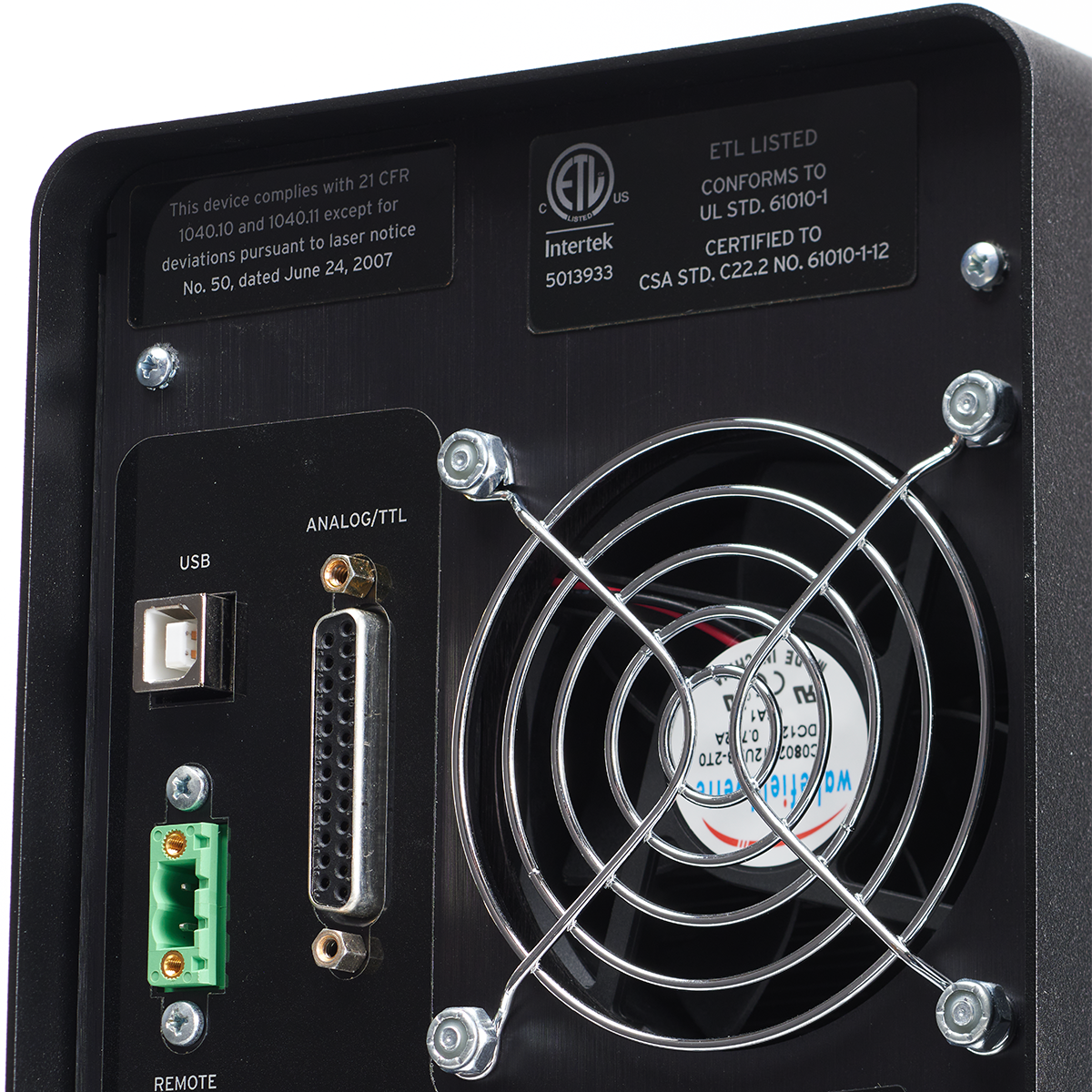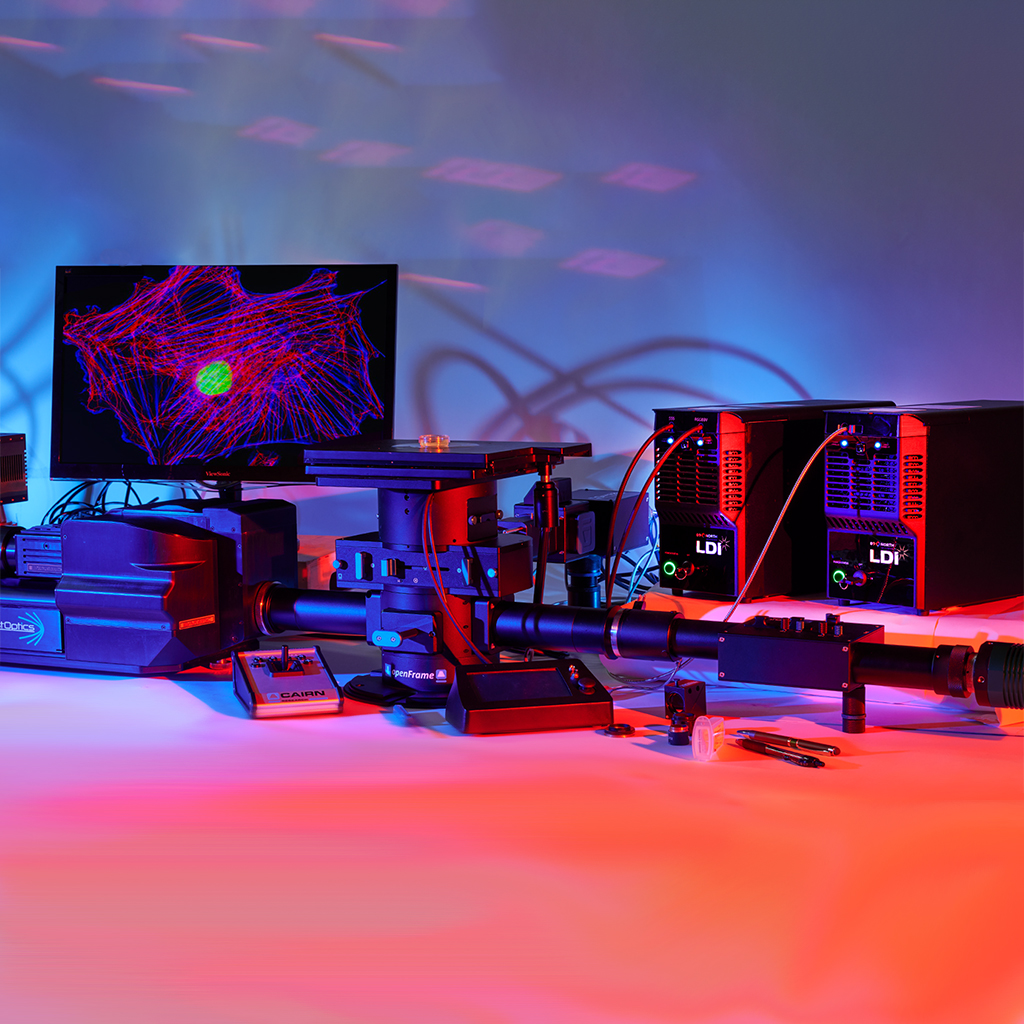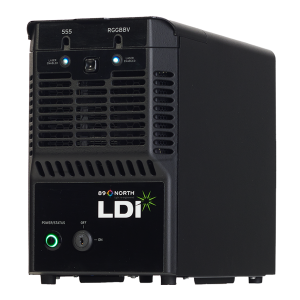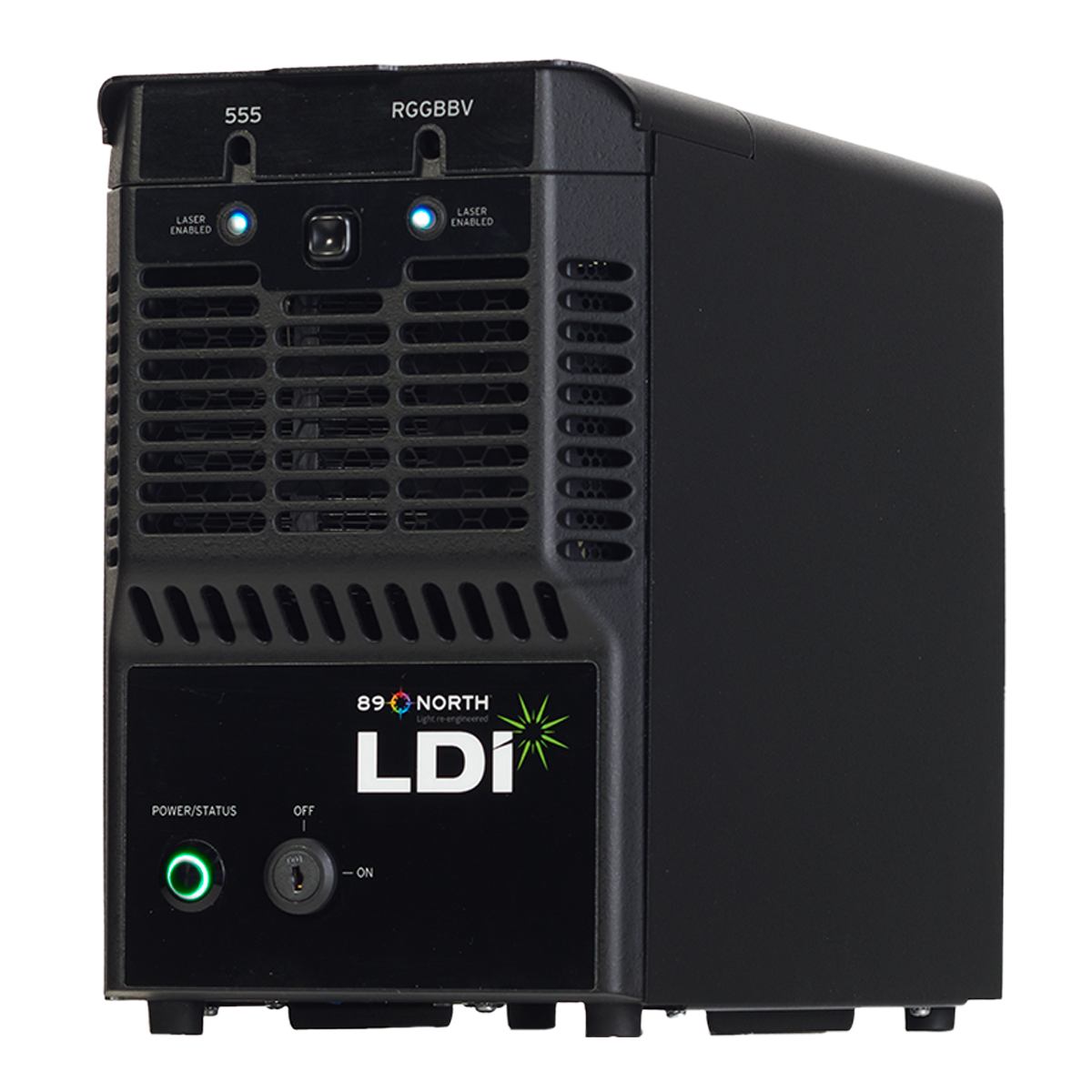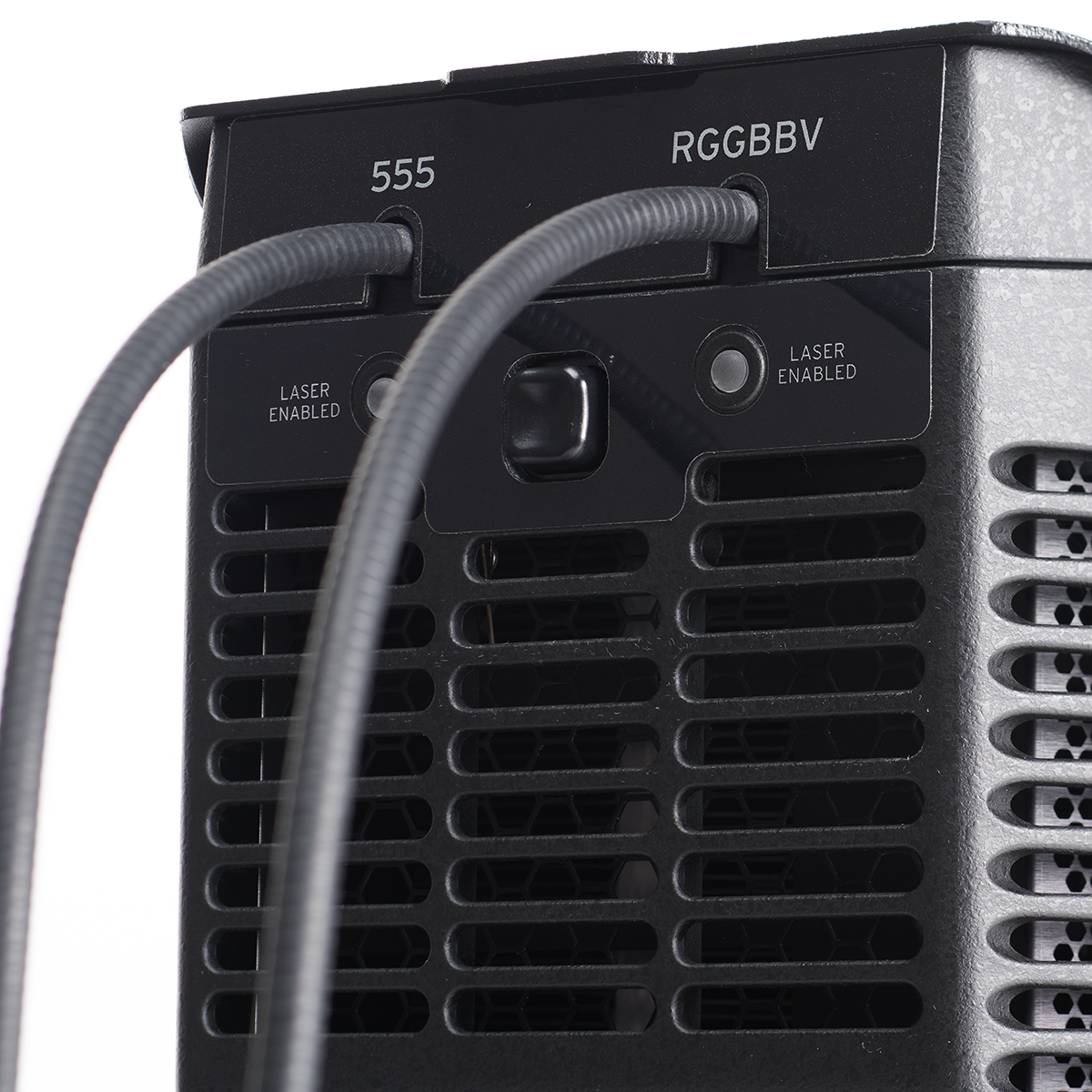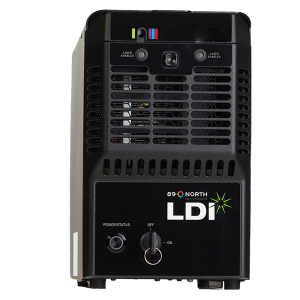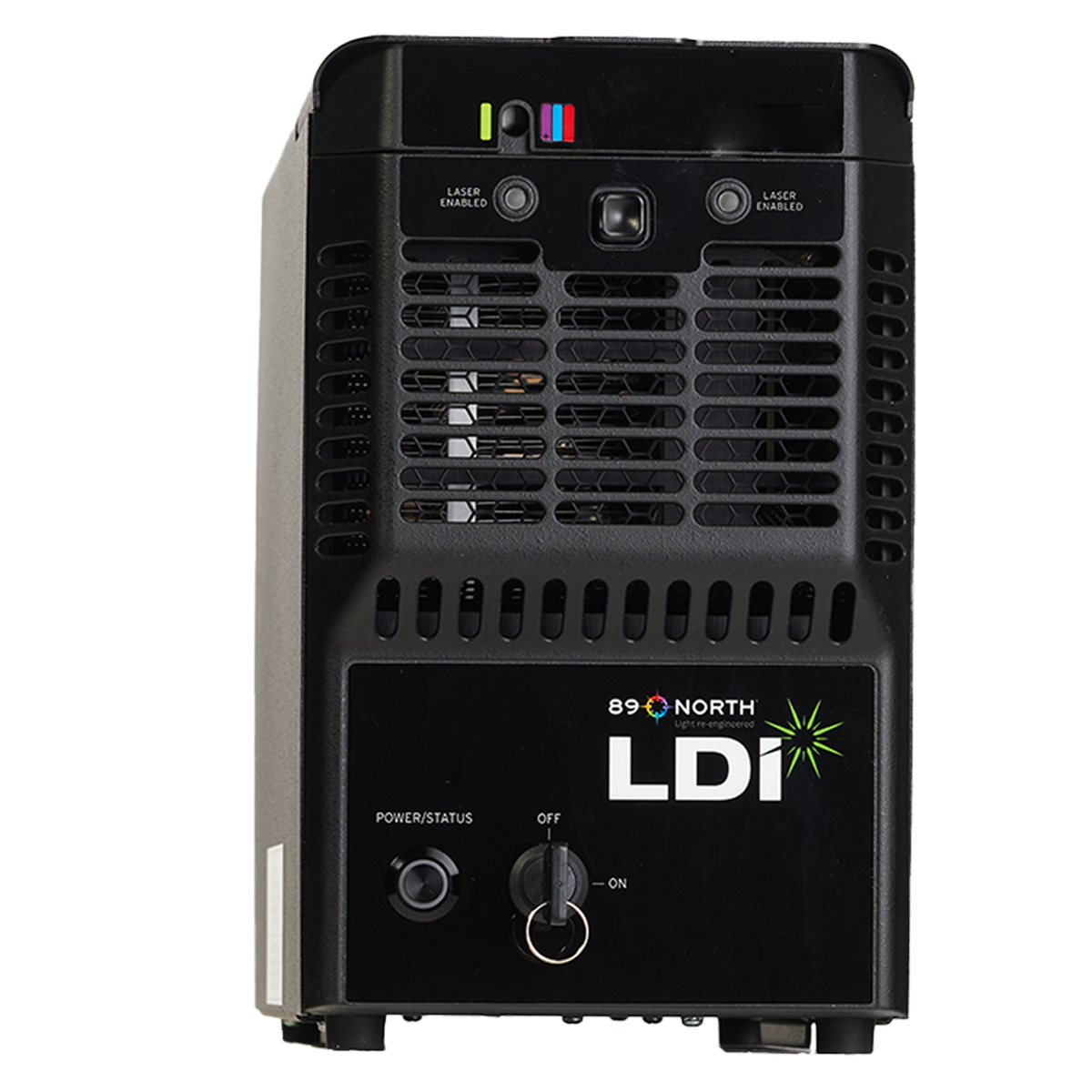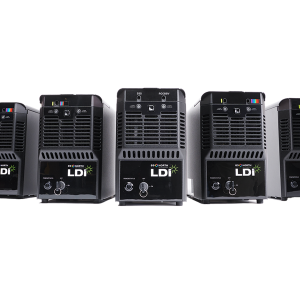LDI-5 Series Overview
The LDI-5 is the big sister of the LDI-4 laser diode illuminator. Once again we listened to our users who asked for a pared down version of the LDI-NIR. The LDI-5 has increased power over her little sister and expands into the near infra-red with the addition of a 730nm line. This unit is also available with a 488nm laser for FITC/GFP and with a 577nm laser for TRITC/mCherry…or both!
Have questions about the specifications or capabilities? >> Ask an Engineer
Specifications
Find specifications for our LDI-5 line of products below. Note that we can also work with you to provide solutions for your unique needs.
| Source Type | Laser Diodes | ||||
| Lifetime | 20,000 hrs – 2 year warranty | ||||
| Laser Line (nm) | 405 | 470 or 488 | 555 or 577 | 640 | 730 |
| Continuous Wave Stability2 | < 2% | < 2% | < 2% | < 2% | < 2% |
| Optical Power Min (mW)1 | 450 | 1000 | 1000 or 700 | 900 | 850 |
| Max Rise Time1 | < 10μs | < 10μs | < 10μs | < 2ms | < 10μs |
| Max On/Off Frequency (Hz)3 | > 1000 | > 1000 | > 1000 | 100 | > 1000 |
| Output Options | optical fiber 4 | ||||
| Control Options | TTL (>2.3 V) Analog (0–5 V) USB–DSP (virtual COM port) – SDK available upon request |
||||
| Safety | Interlocked housing Safety interlock Key interlock IEC 60825 compliant |
||||
| Dimensions | 12.5” x 9.2” x 5.75”, 318mm x 234mm x 146mm | ||||
| Weight | ~9 lbs | ||||
| Operating Temperature | 15-30 ̊ C | ||||
| Storage Temperature | -18-50 ̊ C | ||||
| Humidity | < 80% non-condensing | ||||
| Voltage | 90–220 V AC, 50–60 Hz | ||||
| Fuse | None | ||||
1. Measured at 100% intensity, 23°C ± 2°C
2. Standard Deviation relative to the mean power measurements, measured at 100%
intensity, 23°C ± 2°C
3. Measured at 100% intensity, 50% duty cycle
4. Recommended output fiber is 400 μm, 0.39 NA bifurcated fiber
Features
Find the unique features of our LDI-5 line up below.
| High output power | Shorter exposures Faster imaging Faster activation times in optogenetics and photoactivation experiments Faster bleaching times in FRAP experiments |
| Feedback controlled optical stability | Quantitative imaging, ideally suited for ratiometric imaging More repeatable optogenetics experiments |
| Up to 100:1 linear dynamic range | Ability to turn power down when needed and maintain stability and quantitative imaging |
| 5 laser lines across the spectrum | Covers most of the standard fluorescence probes |
| No user alignment | Easy to use and maintain |
| TTL and Analog control | No need for software specific drivers |
Scientific Applications & Techniques
Our LDI-5 light engines are used in some of the worlds most advanced laboratories in a wide range of applications and techniques. These include those listed below.
|
|
Downloadable Documents
Please find links below to relevant downloads for our products.
LDI-5 Frequently Asked Questions (FAQs)
Here are answers to some of the most frequently asked questions we receive. Not seeing what you are looking for? >> Ask our engineers
The key factors to consider are: wavelength, power, delivery, repeatability, and cost. 89 North can deliver on all factors.
There are many differences but the four most important are:
- Small fiber size. The LDI is available in 100um, 400um, or larger fibers.
- Linearity. The LDI is an extremely useful light source for quantitative imagine, with linearity tracked internally from 1% to 100%.
- Specificity. The wavelengths of light from the LDI are not broad in spectrum line an LED. They are highly specific, which is critical for fluorescent illumination.
- Stability. The LDI is a very stable light source, which enables both accuracy any precision of light measurements.
Virtually none. The LDI ships fully aligned, and requires no regular alignment or cleaning.
Many factors, like wavelength, stability, and maintenance are critical issues that are often overlooked. Don’t just pay attention to cost, as all lasers are not the same.
Absolutely! The LDI is extremely stable, and linear from 1% to 100%.
The LDI is about the size of a small desktop computer. The dimensions are 12.5” x 9.2” x 5.75”, 318mm x 234mm x 146mm. You can find more specifications in the table at the top of the page.
The single most important thing to remember when setting up any laser light source is safety. Always review all documentation carefully, and consult your institution’s laser safety officer with any questions.
LDI-5 Peer Reviewed in Scientific Publications
Our light engines are used in some of the most pioneering labs across the world. Here are some of the scientific citations we’ve received.
-
Kyle Newton
Lateral line ablation by ototoxic compounds results in distinct rheotaxis profiles in larval zebrafish.
-
Barth D. Grant
Large vesicle extrusions from C. elegans neurons are consumed and stimulated by glial-like phagocytosis activity of the neighboring cell.
-
Adriana San-Miguel
Endogenous DAF-16 spatiotemporal activity quantitatively predicts lifespan extension induced by dietary restriction.
-
Heidi Hehnly
Rab11 endosomes and Pericentrin coordinate centrosome movement during pre-abscission in vivo
Our Products are Used in the Nation's Most Advanced Labs
Our LDI products are used in some of the nation’s most advanced laboratories. Here are a few.


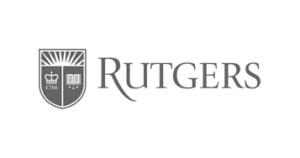


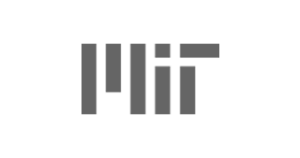
Request A Quote
Contact us for a free quote. Need something bespoke? We can work with you to configure a specialized range of laser lines and options.

Related Products
Related products
-
89 North
LDI-7 Series Laser Diode Illuminator
The LDI is a multiline, solid-state laser illuminator offering up to 1000mW of output power per laser line via a multimode fiber at the price of lower power LED light engines. With feedback controlled output stability and up to a 100:1 linear dynamic range, the LDI is the ideal light source for a wide range of applications including spinning disk confocal microscopy, structured illumination microscopy, FRAP, photoactivation/photoconversion.
(0 reviews) -
89 North
LDI-4 Series Laser Diode Illuminator
The LDI-4 laser diode illuminator is a user inspired version of the original LDI-7. Many researchers were asking for a laser launch that covered only the 4 basic lines: DAPI, FITC, TRITC, Cy5. 89 North listened and we responded. The LDI-4 has only the lines you asked for. While we reduced the number of lines inside the box, we made no compromises on the quality and performance you’ve come to expect from 89 North. This unit is also available with a 488nm laser for FITC/GFP and with a 577nm laser for TRITC/mCherry…or both!
(0 reviews) -
LDI Family Products
LDI Family of Products
The LDI is a multiline, solid-state laser illuminator offering up to 1000mW of output power via a multimode fiber at the price of a low power LED light engine. With feedback-controlled output stability and up to a 100:1 linear dynamic range, the LDI is the ideal light source for a wide range of applications including spinning disk confocal microscopy, structured illumination microscopy, FRAP, photoactivation / photoconversion, and PALM/STORM.
(0 reviews)

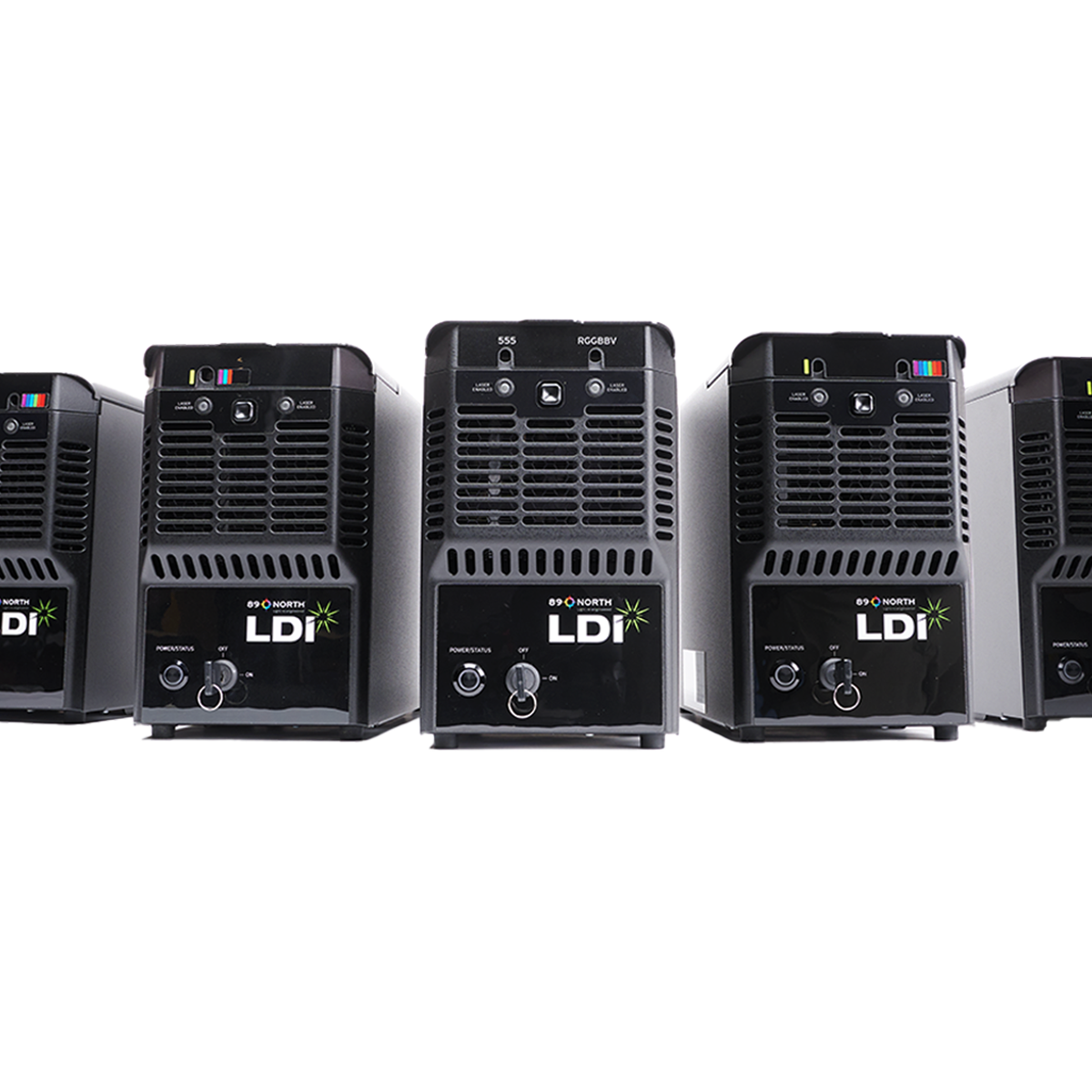
 Washington University in St. Louis
Washington University in St. Louis
 Rutgers University
Rutgers University
 NC State University
NC State University
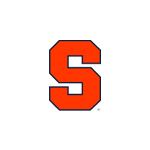 Syracuse University
Syracuse University

